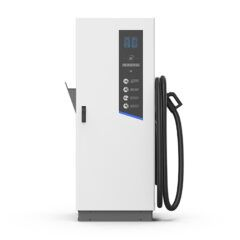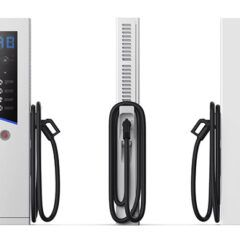DIY Method to install Electric Car Wall Charger
What is the best way to charge my electric car at home?

In order to be able to charge an electric car at home with electric car wall charger, a standard 230V socket is basically enough. For this purpose, a compact, brick-size charger actually includes with every new vehicle.
This limits the maximum current from the socket to 2.3KW and has a plug for the socket on one side and a Type 2 plug for the vehicle on the other side. However, electric car wall charger is not the optimal solution for charging your vehicle. Rather as a “reserve canister” that you carry around with you in case of emergencies.
Generally, you have very limited charging options. It also places a great deal of strain on this socket and the line up to that point. But wait a minute. The sockets in the household can handle 16A (Ampere), or they usually fuse with 16A!?
What can I do to charge my electric car faster?
If you not only want to charge more safely, but also much faster than at the socket, we recommend purchasing a so-call wall box .A electric car wall charger is basically comparable to a CEE power socket .It normally install in garages or workshops, because it design to be able to deliver high performance over the long term.
The difference to these power sockets, however, is that the wall box communicates with the vehicle, making the charging process safer. In addition, the boxes design to install and operate safely outdoors.
Caution regarding installation of wall charger:
A wall box should install by a specialist, as this will involve intervention in the electrical installation of the house. The changes may also have to make to the electrical distribution system in the house. A new, special RCD or residual current circuit breaker may also have to install if the wall charger does not offer the protection itself.
This is where the on-site specialist can best assess what requires. If the electric car wall charger is properly in place, you can start! Depending on the model and depending on the maximum possible charging capacity of the vehicle, up to 22KW can charge.
What must be considered when selecting the wall charger?
When buying a wall charger, there are various aspects that can or even have to consider. The type 2 plug is the standard for vehicles currently sold in Europe. So, there is no choice between type 1 or type 2.In addition, to the maximum possible charging capacity, wall boxes are available with many different equipment variants and designs.
What should the wall charger look like anyway?
The design of the electric car wall charger plays an important role for many customers. The wall box often installs in the visible area in front of the house. From simple and plain, to stylish and modern, to robust and unfussy, everything is there. Manufacturers often stay true to their design language, leaving you spoiled for choice when comparing design versus features.
Single phase or three phase electric car wall charger!
That depends entirely on what the existing house connection can do and which line you can pull to the wall box. The recommendation from our side is to use an 11KW wall box. There are only a few vehicles that can charge with 22KW.
If they are, many house connections not design to be able to permanently supply 22KW, i.e2. Moreover, we can install it in homes. What should also note here is that 11KW wall chargers must report to the energy supplier and 22KW wall chargers even require approval.
Electric car wall charger with or without cable!
Both clearly have their advantages here. If the cable permanently connects, you always have it ready to hand. You may have the problem of having to wind up the cable near the electric car wall charger. Then there is the choice of the length of the cable.
A special feature here is the possibility that the wall charger is not permanently mounted on the wall. But install as an intermediate device in the cable, similar to the original charger from the vehicle manufacturer.
Authentication to load!
It is depending on where the wall charger install. it can be interesting to activate the wall charger before charging or to allow charging via authorization.

This can be done either via a key switch or a so-call RFID card. It is held in front of the reader on the wall box. This makes it impossible for strangers to simply use the wall charger without authorization.
Display or status LED?
In order to determine the status of the electric car wall charger or the charging process, there is the option of reading it either via a display or via individual LEDs. Signaling via LEDs is actually sufficient for home use, but a display offers a clearer statement about the charging process and can also individualize in addition to the amount of energy charge.
Billing with the employer?
Anyone who uses an electric vehicle as a company car has a strong interest in passing on the cost of the charge energy, which bills to the grid supplier via the private energy meter, to the employer in order to reimburse. This requires a wall box with an integrated energy meter that conforms to calibration law. This topic is relatively complex, so we offer a separate post on it.
Electric car wall charger or simple charging point!
In the age of smart, i.e. intelligent, buildings, electric car wall charger naturally also belongs in the network of different devices. Many manufacturers offer their wall boxes with an optional network-based communication interface.
Status information about the wall box and the charging process can then call up via the interface and even the charging can be actively control and regulate.
This is very interesting in combination with a photovoltaic system, because then the charge can control depending on the power produces from the sun. Of course, there are also cheaper variants without communication.

